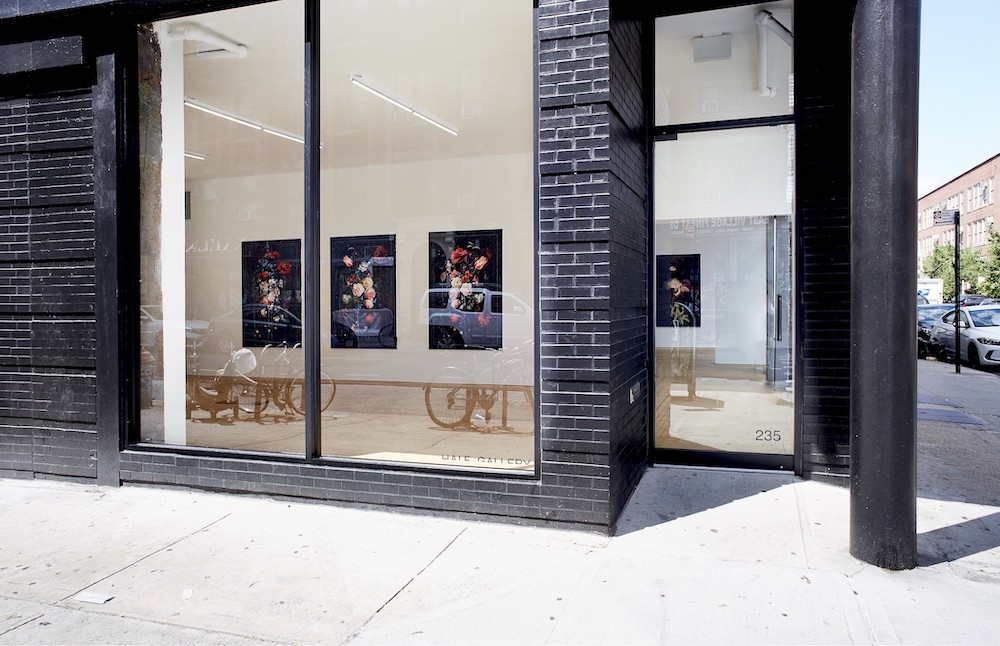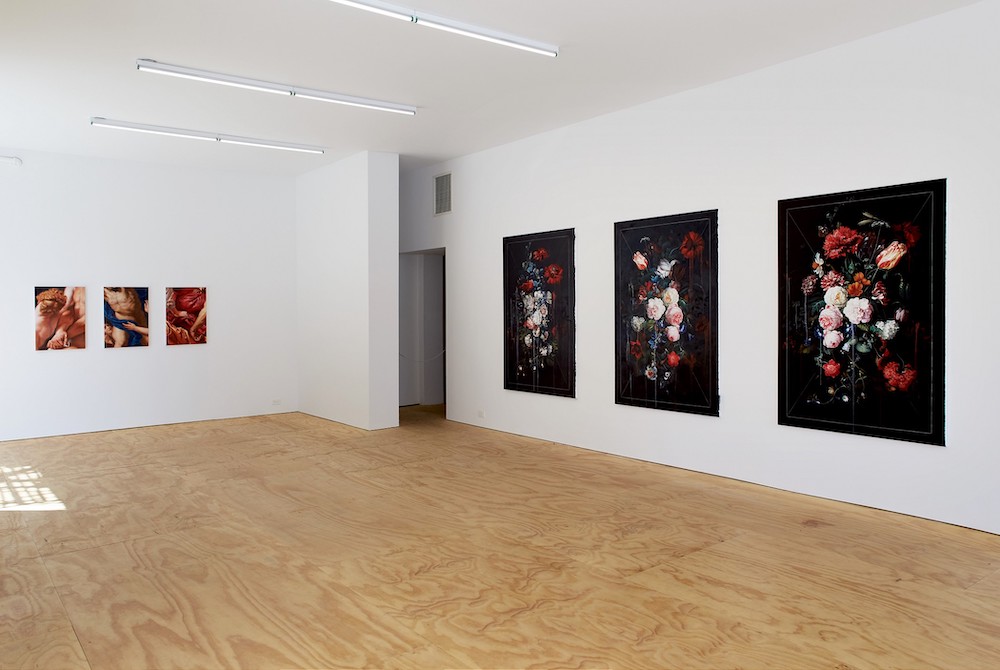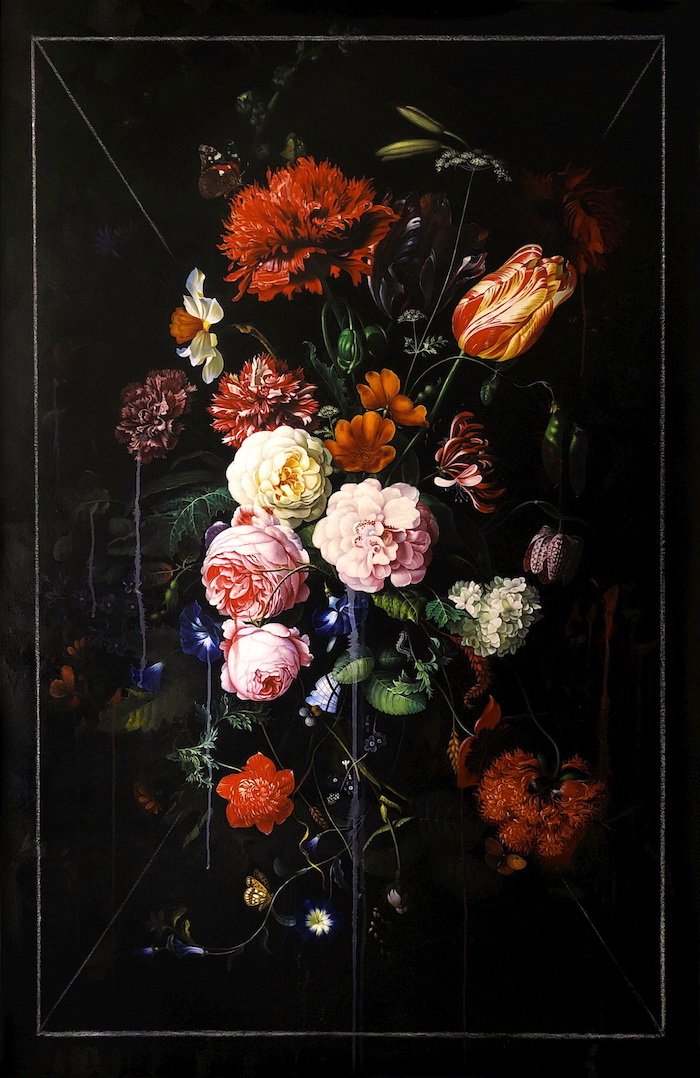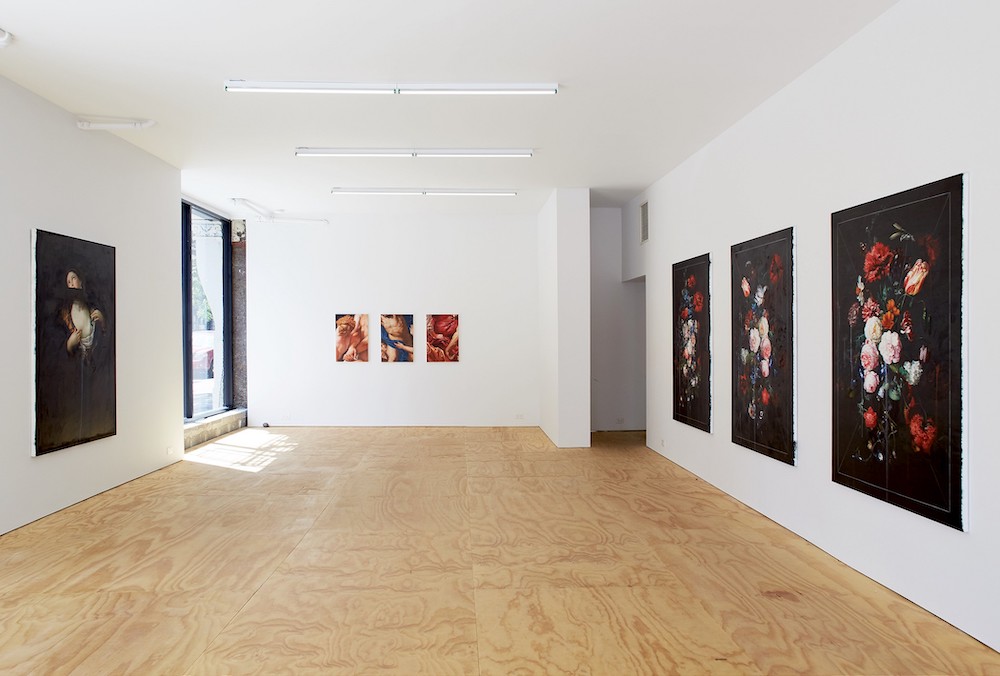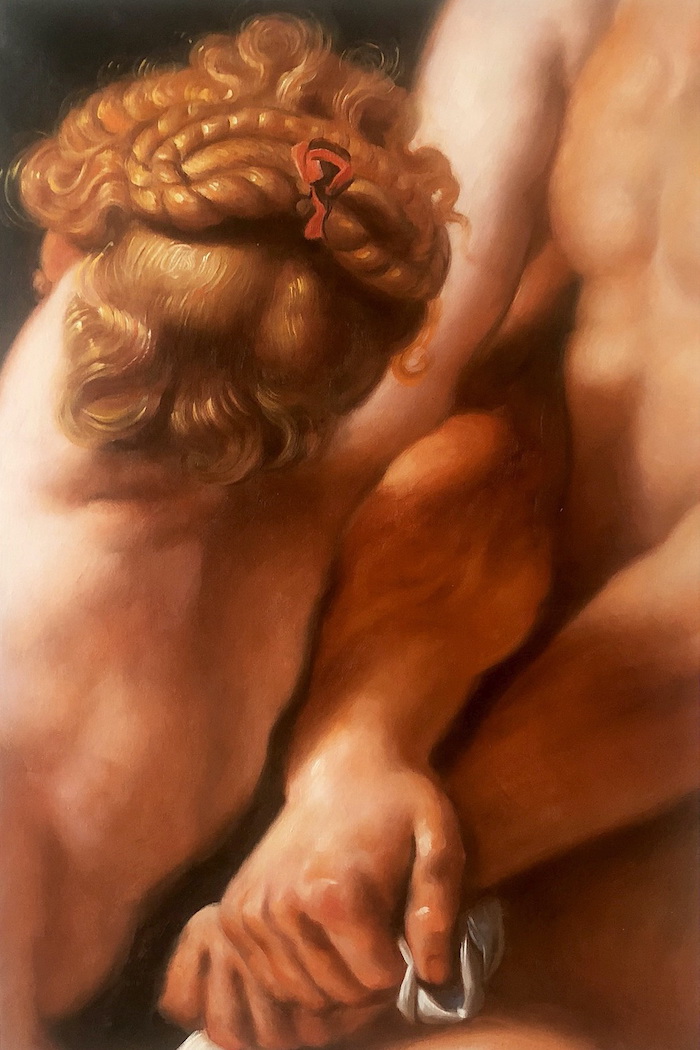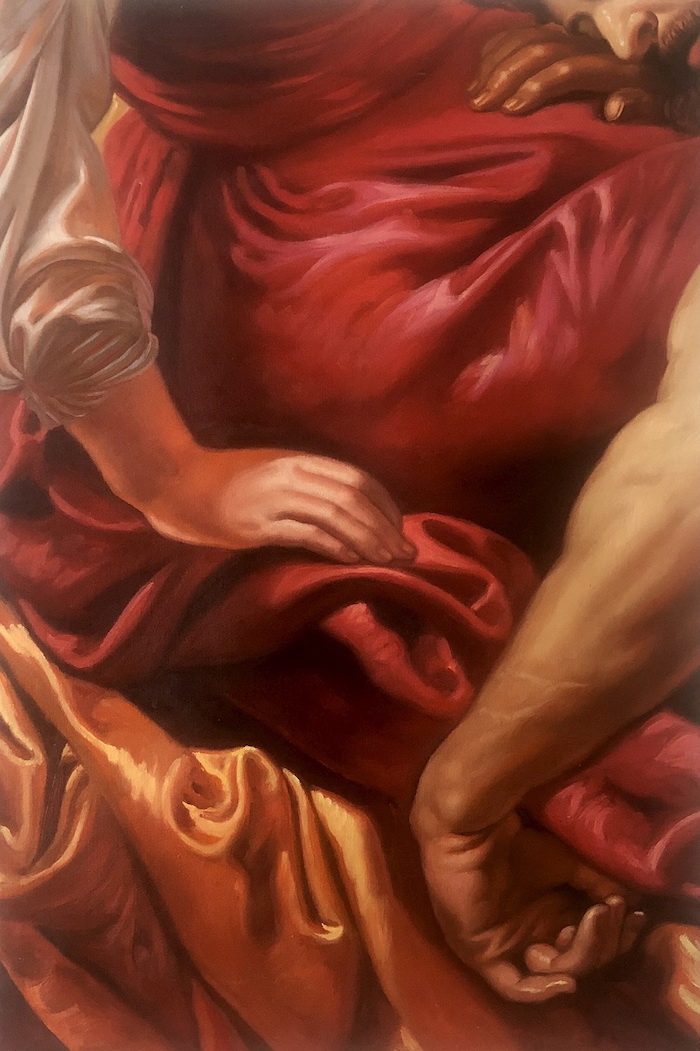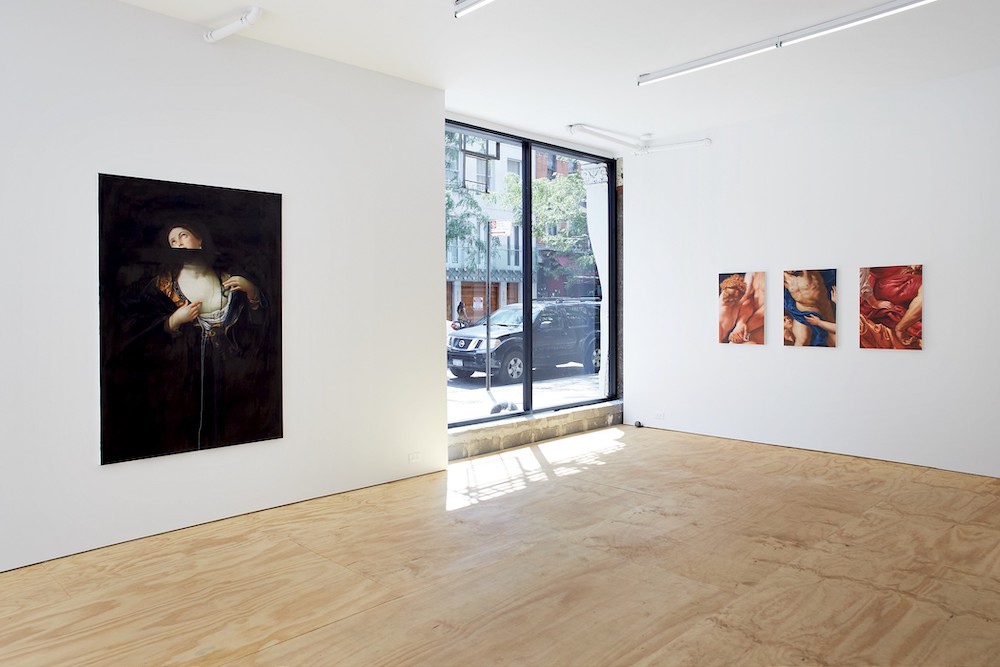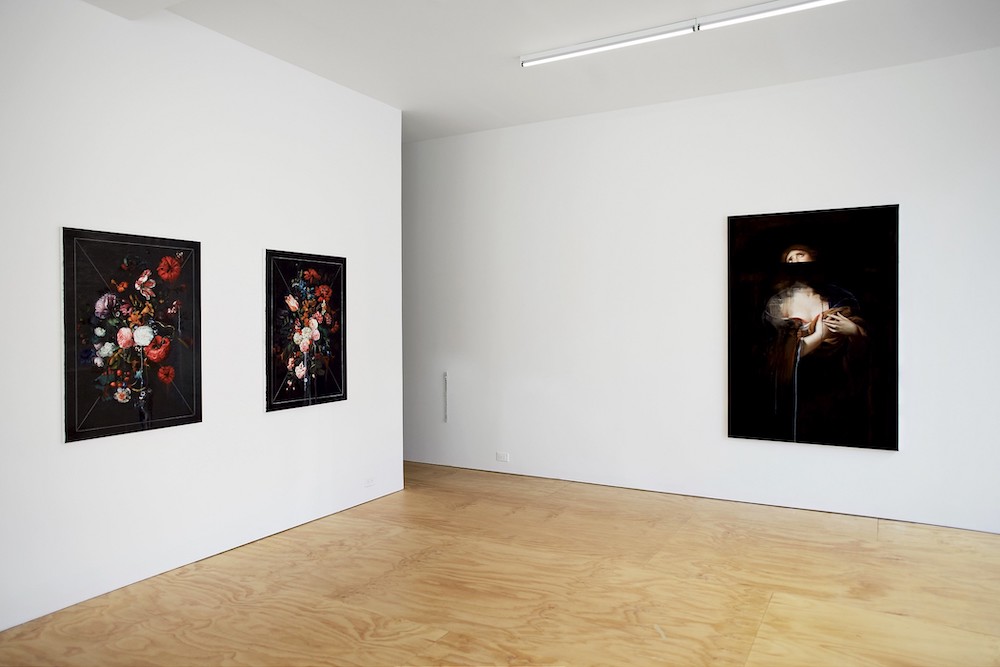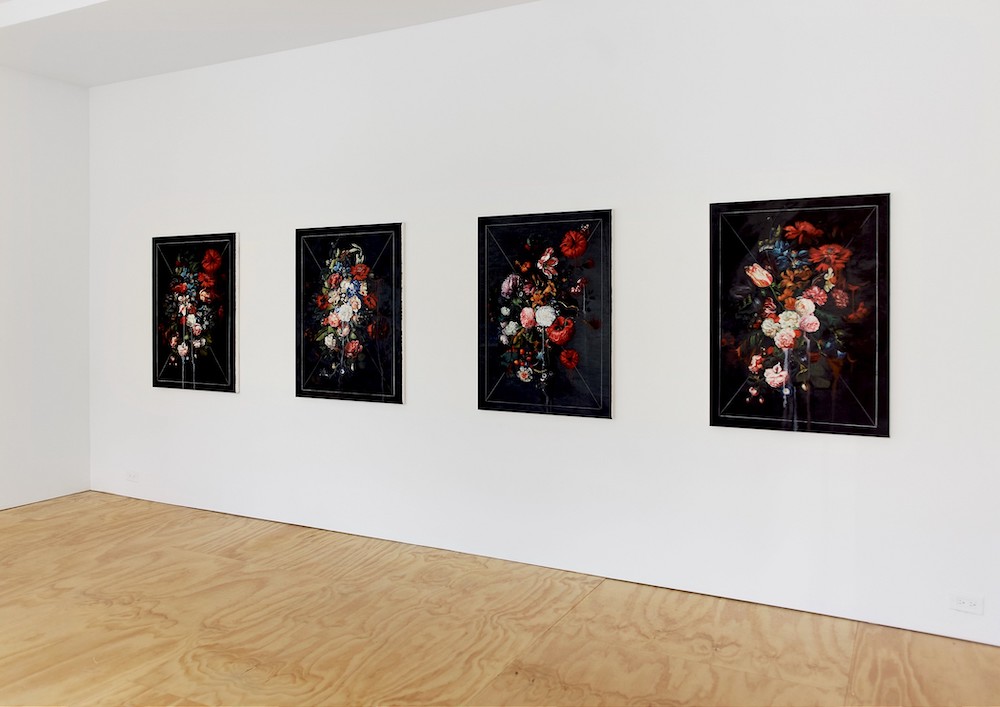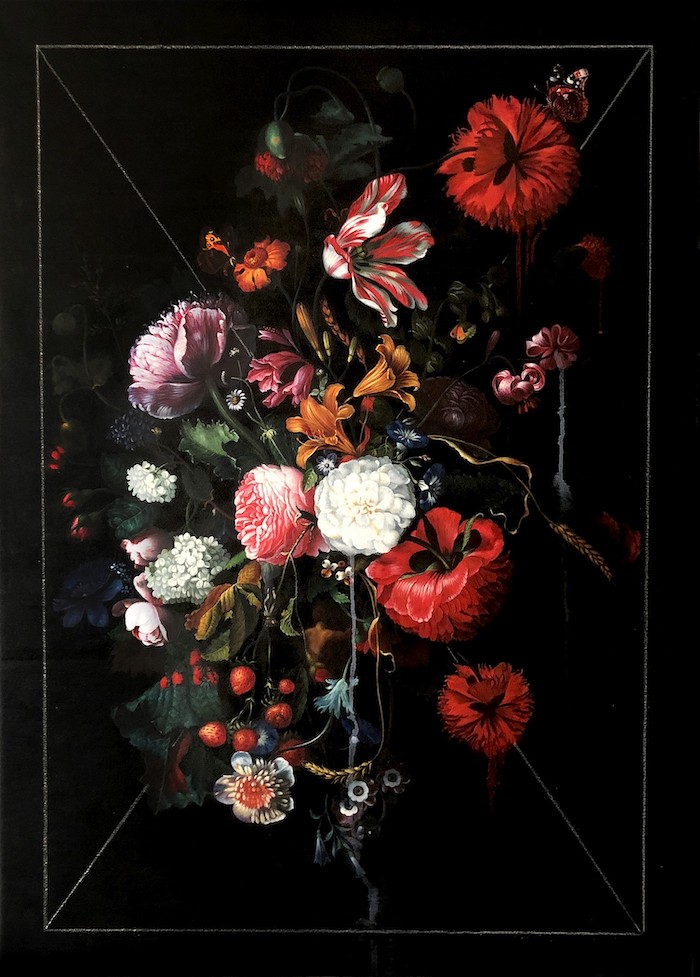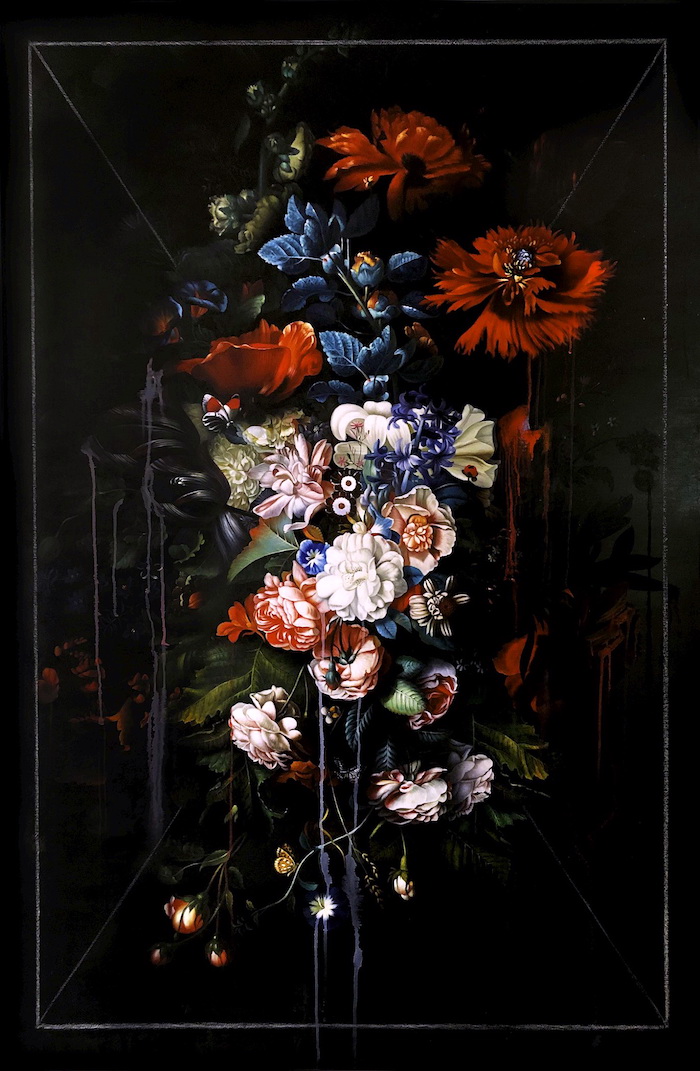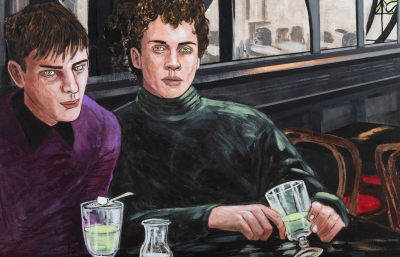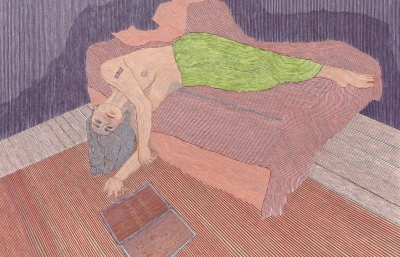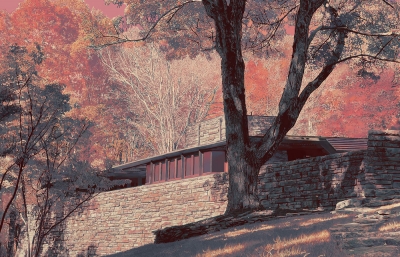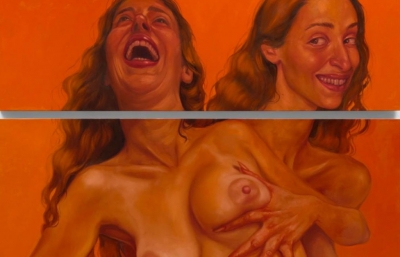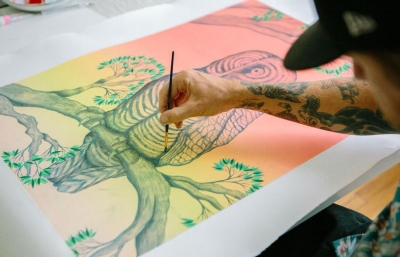It takes some chutzpah—and a great deal of talent—to take on the Old Masters. This is not to say that Ted Pim challenges them. On the contrary, he appreciates the dramatic pull of the signature black pool from which a haunting portrait or floral bouquet emerges. But with a gash here and smear there, Pim injects action, imperfection and emotion into an image, suffusing a still life—with life. Over the years, the Belfast-based artist has evolved his technique. obsessively perfecting his brushwork and ability to mix, blend, and apply paint. He deftly creates the most luminous surface on each petal of his luxuriant flower arrangement and renders the most subtle anatomical quirks of his subjects, all with affectionate roguery. Honoring the historical subjects exhibited in hallowed museums, he spices up the canvas for an appreciative modern audience.
After a successful breakthrough exhibition with The Salon in LA last year, Pim just opened his debut with NYC gallery, Half Gallery. And since we've had a great conversation with him back in November, we've figured it was time to catch up in anticipation of this showcase.
Sasha Bogojev: Isn't it nice to see such classic, traditional images still getting so much love in the art world? Did you ever doubt that your love for the "classics" might be "out of date”?
Ted Pim: It’s great. I think people have always admired traditional old masters but I've certainly felt over the last five years that more and more people have been drawn to this style. I'm not sure why this is, but it may be down to people like Virgil Abloh or Beyonce using the Old Masters as a backdrop for their creations. I've never doubted or thought about the classics as being out of date, and as a kid I always loved reading about the stories behind the paintings. When you're in front of them you can almost travel back in time and step into that world.
How did the show with Half Gallery come about?
It's actually a great story. It involves one of my collectors from the LA show, Sean Avery, the ex-NHL player now turned actor. Bill Powers from Half Gallery just told me yesterday how it came about. Bill and Anna Park were smoking outside Tom Sachs and Sarah Hoover's Art Production Fund Gala, and when Sean Avery arrived and shouted to Bill, "TWO WORDS . . . TED PIM." Bill had watched Christopher Nolan's new movie trailer (it looks so good) where Martin Donovan says, "All I have for you is a word: Tenet" at the start of the trailer. So Bill thought he was quoting the trailer, then Sean got confused, as he is actually in the movie. And I think the confusion made Bill remember my name. Bill messaged me on Instagram that night and it's gone from there. He sold paintings of mine at the Dallas Art Fair, then offered me a solo. It is a classic case of right place, right time. It's nice to have people in your corner and I'm lucky to have some great collectors.
I am over the moon to add my name to Half Gallery's roster: Nathaniel Mary Quinn, Louise Bonnet, Tanya Merrill, Genieve Figgis, the list goes on and on. Every single person on his artist list I admire, all artists at the top of their game. He has a great eye. I remember you messaging when you found out, and we were geeking out, I'm still buzzing.
Is there an idea that your floral still lifes exist as a burst of flowers, unfettered by vases or other elements?
Yeah, I try to achieve a sense of stillness in them. Someone recently pointed out that the flowers have become bigger over the last few years, where they seem to take up more of the canvas, something that wasn't intentional. What a nice thought that they're almost growing as time goes on.
How do you create reference images? Are they from existing works?
Most of them are a mashup of Dutch flower paintings from 1600: van Aelst, Ruysch, or Bosschaert. Some of them would have 5 to 10 different paintings to make the one composition. I remember Glenn Brown calling himself Dr. Frankenstein and saying he takes "dead parts of other’s work” to bring “a sense of strangeness” to their depictions of the world. I like that. Even though I’m using borrowed images from books, I put them together in ways you’ve never seen before.
I've noticed some flowers or stems and leaves duplicated in a couple of works, like the blue leaf rosebud in the middle. Are such elements meant to suggest a certain narrative among the works?
Yeah, each flower or repeated symbol has a meaning to me. I would never give the meaning away though, as I like the viewer to decide what it means to them. The composition is all about escapism for me. I like to paint these other worlds to run away to when in the studio. In Rambling Laughter, I have painted a small male figure; a Puck-like character making his way between the leaves, suggesting another world awaits if you follow him.
The light seems to be a very important part of these works, with more flora appearing from the darkness, suggesting that the whole arrangement is actually much bigger than the format. Is that what you have in mind?
Very much so. I try to give the painting an unsettling aura with strange strange synthetic lighting, breathing life into an old painting of flowers. I add lines to make the flowers feel like they're floating in time, giving the viewer a chance to witness a fleeting moment that will last forever. Everything in this world is temporary, and it's a call for us to be present at the moment.
The exhibition introduces a new concept of cropped images of human figures and draperies. How did these come about?
I liked playing with the idea of cropping a big scene and making the viewer question what is going on. With Red Bow it got my family asking what it was and what's the bigger picture, which was nice as I don't come from a family that would talk about art really. So, I felt that starting a conversation achieved what I set out to do. Some people have asked if it was a sex scene as there was so much skin present on the canvas, but it's from Ruben's Massacre of the Innocents. Rubens’ intention with this painting was to shock and unnerve in an outcry against the atrocities of war and violence. Cropping this painting gave the painting a whole new narrative in the viewer's eye, the complete opposite of why Ruben painted it. It's a demonstration of how dramatically we can change our perspective on history if we purposely leave out elements of the story.
These works seem to be rendered a bit differently than the flowers. While depicting all the detail and creating a visually smooth scene, the brushwork is very noticeable which usually isn't the case with the "originals." Can you explain why you choose to render them this way?
You've got a good eye. I painted these in a looser manner so the viewer has to be at a distance to view them ,and to understand what is going on, they almost have to imagine the rest of the scene around the painting to make up their own narrative. This gives a small canvas a much larger presence.
Again, are they cropped images of existing works and if so, how do you select the section you'd like to portray? The anatomies seem to be on steroids, quite exaggerated. Is this something you are making purposely?
All three crops are from Ruben's paintings from the time period 1609—1612, a time when I felt he produced his strongest work. He had lived in Italy between 1600 and 1608, when he observed first-hand the works of Caravaggio, and you can really see the influence it had on his painting, with the drama and color cranked up a few levels. I try to crop and exaggerate parts of the image that will create a narrative that doesn't match the intended purpose of the original painting, making the paintings lean toward the grotesque, echoing artists such as Glenn Brown and Elizabeth Peyton who also traffic the vernacular of Old Masters.
After a successful showcase in LA last year and this major NY debut, what are your hopes or plans for the future?
I am currently working on new paintings to exhibit in a solo booth with Half Gallery at The Dallas Art Fair in October.
Ted Pim's solo show, When Time Stood Still... is on view at Half Gallery NYC through July 18, 2020. Got peep it through the windows!

